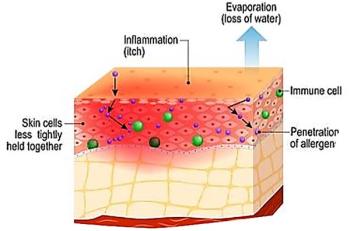
Inflammation Linked to Reduced Lung Function In Young Adults
DUNEDIN, New Zealand -- Widespread systemic inflammation may be the missing link that explains why reduced lung function leads to heart disease, researchers here said.
DUNEDIN, New Zealand, June 29 -- Widespread systemic inflammation may be the missing link that explains why reduced lung function leads to heart disease, researchers here said.
In older patients, impaired lung function is a risk factor for cardiovascular disease and is associated with systemic inflammation, noted Robert Hancox, M.D., of the University of Otago here, and colleagues.
Now, Dr. Hancox and colleagues have found that the link between inflammation and lung function also appears in young adults - long before they have any cardiovascular symptoms.
What's more, they reported online in Thorax, the association is independent of sex, smoking, asthma, and body mass index.
The reasons for the link remain unclear, Dr. Hancox and colleagues said, "but the findings indicate that the association between lower lung function and increased inflammation predates the development of either chronic lung disease or clinically significant atherosclerosis."
The findings come from an analysis of 1,000 participants in a long-running longitudinal study, including people born in the city of Dunedin from April, 1972 through March, 1973.
When participants were ages 26 and 32, the researchers assessed serum levels of C-reactive protein - a marker of inflammation - and lung function, measured as forced expiratory volume in one second (FEV1.)
To approximate normal distributions, CRP levels were transformed by natural logarithms, and FEV1 was compared to log-CRP.
The study found that at both ages, lower FEV1 was associated with higher C-reactive protein. Specifically, for every standard deviation increase in log-CRP, FEV1 decreased by:
- 75 to 89 mL at age 26, depending on which factors were included in the regression analysis.
- 58 to 94 mL at age 32, depending on which factors were included in the regression analysis.
All decreases were statistically significant, usually at P<0.001.
When the analysis was restricted to those without asthma who had never smoked, lung function decreased by 85 mL at age 26 and 58 ML at age 32 for every standard deviation increase in log-CRP. The decreases were significant at P=0.007 and P=0.027, respectively.
Even when all other health problems, past year cannabis smoking, current tobacco smoking, or current asthma were excluded, the finding was similar, the researchers said. There were decreases of 96 mL at age 26 and 70 mL at age 32, which were significant at P=0.016 and P=0.006, respectively.
The analysis found that log-CRP did not predict change in lung function from ages 26 to 32, but the reverse was true: a lower FEV1 at age 26 predicted higher C-reactive protein at age 32. The association was significant at P<0.001.
The study was limited, the researchers said, because the method used to measure C-reactive protein at age 26 had a relatively low sensitivity, which may have reduced the chance of finding a prospective association between the protein level and subsequent decline in lung function.
On the other hand, the results were similar from one age to the next, the study population is representative of the national population, and the distribution of C-reactive protein values is similar to that seen in other studies, the researchers said.
"The findings suggest a plausible mechanism by which a reduced FEV1 is associated with an increased risk of cardiovascular disease in a manner that is independent of smoking and known respiratory disease," they concluded.
Newsletter
Enhance your clinical practice with the Patient Care newsletter, offering the latest evidence-based guidelines, diagnostic insights, and treatment strategies for primary care physicians.




